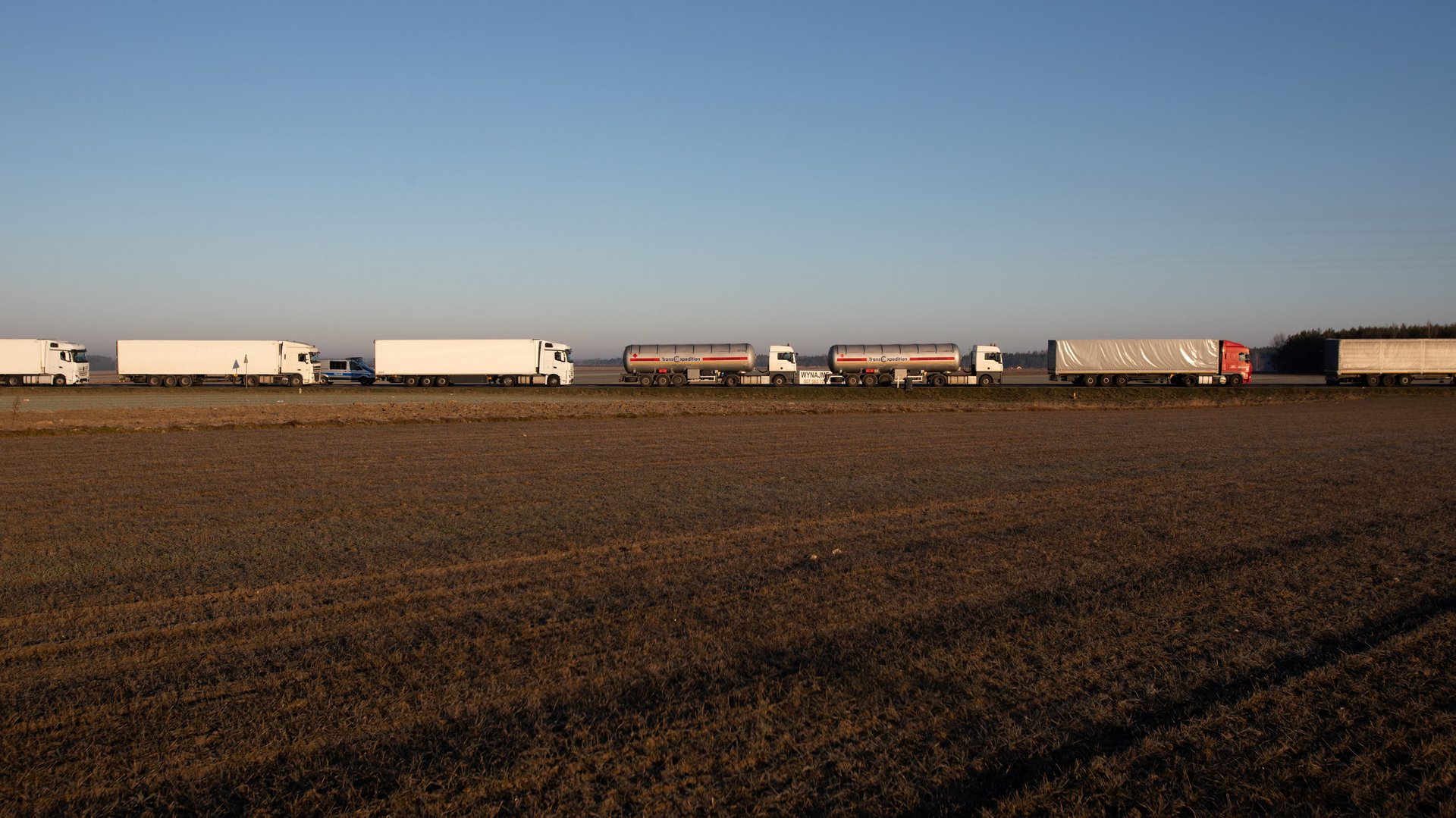An 80-km line of trucks at the Polish border is trying to escape EU sanctions
The European Union set off a rush to the borders for thousands of drivers when it announced earlier this month it would ban Russian and Belarusian trucks from working in the bloc in response to the war in Ukraine.


The European Union set off a rush to the borders for thousands of drivers when it announced earlier this month it would ban Russian and Belarusian trucks from working in the bloc in response to the war in Ukraine.
On April 16, the line of Russian and Belarusian trucks hoping to leave the EU before sanctions took effect stretched for 80 kilometers (50 miles) at the border of Poland and Belarus, at a border crossing in the Polish town of Koroszczyn.
Russian and Belarusian freight road operators have been banned since April 16 from working in the EU, except for those transporting essentials such as food, mail, medicine, and energy. Belarusian leader Aleksander Lukashenko, an ally of Russia, has supported Vladimir Putin’s war by hosting Russian troops in the months before the invasion and allowing them to cross into Ukraine.
Yet as many as 400 vehicles were still waiting at border crossings as the midnight deadline passed on April 16, with some stuck at the border for up to 33 hours, and thousands more believed to be in the EU. Long lines were also reported in the Polish town of Bobrowniki.
The trucking industry feels the strain
The war in Ukraine has exacerbated an already-existing truck driver shortage, as Ukrainian truckers began leaving jobs in western Europe to return home and fight. The Federal Association of Freight Transport, Logistics and Disposal estimated in March that more than 100,000 Ukrainian truck drivers—many of whom work for Polish and Lithuanian hauling companies—could be drafted into military service.
The European ban on Russian and Belarusian vehicles may further disrupt the sector, although the European president of XPO logistics told the Financial Times it’s unlikely to be as disruptive as the loss of Ukrainian drivers. Thousands more Russian and Belarusian vehicles are likely trapped in the EU, reports the BBC, though it’s not clear what will happen to them now that the deadline has passed.
Sanctions are reshaping a globalized world
Should Europe seize sanctioned trucks, for example, Russia could retaliate against Polish truckers passing through the country on their way to or from countries such as Mongolia, Kazakhstan, and Uzbekistan, the head of the trade body for Polish transport groups told the Financial Times.
The sanctions against Russia, and the pileup of trucks at the Polish border, shows how wide-spanning Western sanctions are reshaping economic borders and forcing countries to turn inward, reducing their dependency on some international trading partners. The EU was a top trading partner of Russia’s before the war, importing more than €158 billion worth of goods from the bloc in 2021. But the trucking ban will further cripple trade, even if Europe tries to retain access to essential commodities such as energy and fertilizers. Not only is Europe cutting off trade with Russia by land, it’s also cracking down on Russian ships entering its ports, as well as seeking to wean itself off energy imports from the country. In the US, automakers are rushing to secure their own supplies of raw materials used to make electric vehicle batteries, and the government is turning to its own strategic petroleum supply to try to make up for a loss of Russian oil.
While it will take months before Russia bears the full brunt of sanctions, the lines of the globalized world are being redrawn as Putin’s war in Ukraine continues, and they are unlikely to go back to the way they were.